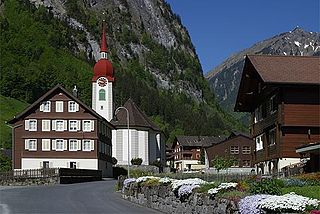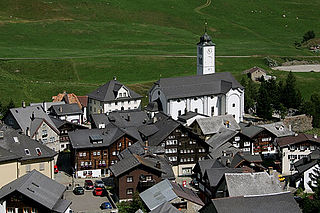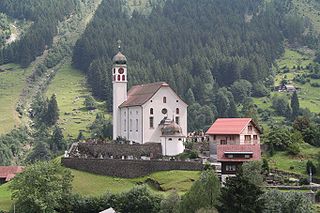
Göschenenlocally[ɡɔʊʃɛnɛn] is a village and municipality in the canton of Uri in Switzerland. It sits at the northern end of the Gotthard tunnel. The Göschenen riots (1875) saw Urner troops opening fire on Italian miners demonstrating for better working conditions and wages on the tunnel's construction site.

Isenthal is a municipality in the canton of Uri in Switzerland.

Sisikon is a municipality in the canton of Uri in Switzerland. It is situated on the shore of Lake Lucerne.

Attinghausen is a village and a municipality in the canton of Uri in Switzerland.

Bauen is a former municipality on Lake Lucerne in the Swiss canton of Uri. On 1 January 2021 the former municipality of Bauen merged into the municipality of Seedorf.

Bürglen is a municipality in the canton of Uri in Switzerland.
Graben is a municipality in the Oberaargau administrative district in the canton of Bern in Switzerland.

Oberbipp is a municipality in the Oberaargau administrative district in the canton of Bern in Switzerland.

Erstfeld is a municipality in the canton of Uri in Switzerland.

Gurtnellen is a village and a municipality in the canton of Uri in Switzerland.

Hospental is a municipality in the canton of Uri in Switzerland.

Realp is a municipality in the canton of Uri in Switzerland.

Schattdorf is a village and a municipality in the canton of Uri in Switzerland.

Silenen is a municipality in the canton of Uri in Switzerland.

Spiringen is a village and a municipality in the canton of Uri in Switzerland. The municipality comprises two disjoint areas, separated by the municipality of Unterschächen and the Klausen Pass. The western area includes the village of Spiringen in the Schächen Valley, whilst the eastern area includes the Urner Boden alp above Linthal and the canton of Glarus.

Unterschächen is a municipality in the canton of Uri in Switzerland, situated in the upper Schächental.

Wassen is a municipality in the canton of Uri in Switzerland.

Reiden is a municipality in the district of Willisau in the canton of Lucerne in Switzerland. On January 1, 2006 the former municipalities of Langnau bei Reiden and Richenthal were united in the new municipality of Reiden.
Arbaz is a municipality in the district of Sion in the canton of Valais in Switzerland.

Kippel is a municipality in the district of Raron in the canton of Valais in Switzerland.

























